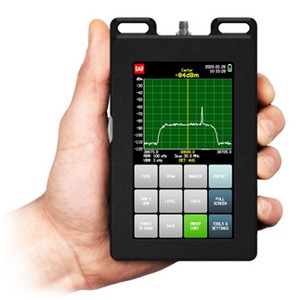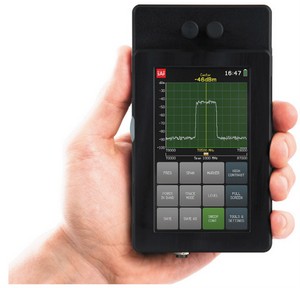A spectrum analyzer measures the magnitude of an input signal versus frequency within the full frequency range of the instrument. The primary use is to measure the power of the spectrum of known and unknown signals. The input signal that a spectrum analyzer measures is electrical, however, spectral compositions of other signals, such as acoustic pressure waves and optical light waves, can be considered through the use of an appropriate transducer. Optical spectrum analyzers also exist, which use direct optical techniques such as a monochromator to make measurements. A signal analyzer employs digital techniques to extract useful information that is carried by an electrical signal. In common usage the term is related to both spectrum analyzers and vector signal analyzers. While spectrum analyzers measure the amplitude or magnitude of signals, a signal analyzer with appropriate software or programming can measure any aspect of the signal such as modulation. Today's high-frequency signal analyzers achieve good performance by optimizing both the analog front end and the digital back end.
Rohde & Schwarz
Since 1986, Rohde & Schwarz has offered innovative signal and spectrum analyzers whose unique characteristics enable them to redefine the current state-of-the-art again and again.
Signal and spectrum analyzer 10 Hz to 4 GHz, WXGA displ
..
Signal and spectrum analyzer 10 Hz to 44 GHz, WXGA disp
..
Signal and spectrum analyzer 10 Hz to 7.5 GHz, WXGA dis
..
Signal and spectrum analyzer 10 Hz to 30 GHz, WXGA disp
..
SAF North America LLC
Every aspect of SAF's Spectrum Compact series of hand-held spectrum analyzers (300 MHz - 86 GHz) and signal generators (6 GHz - 40 GHz) has been designed with field use in mind, including a resistive touchscreen for operation with gloves, beefy thumbscrews for SMA and waveguide connections, and high-contrast and fill display modes for easy readability in bright light situations. The 8 GB of memory allows you to save thousands of spectrum traces for offline analysis, investigation, and reporting using the included PC software. Spectrum Compact devices are irreplaceable when performing site survey, radio parameter verification, antenna alignment, interference detection, line-of-sight verification and interference hunting.
Spectrum Compact kit 24-40 GHz v.2
Spectrum Compact kit 0.3-3 GHz
Spectrum Compact E-band 70-87GHz and antennas kit in ca
..
Spectrum Compact 0.3-3 GHz basic kit for USA








